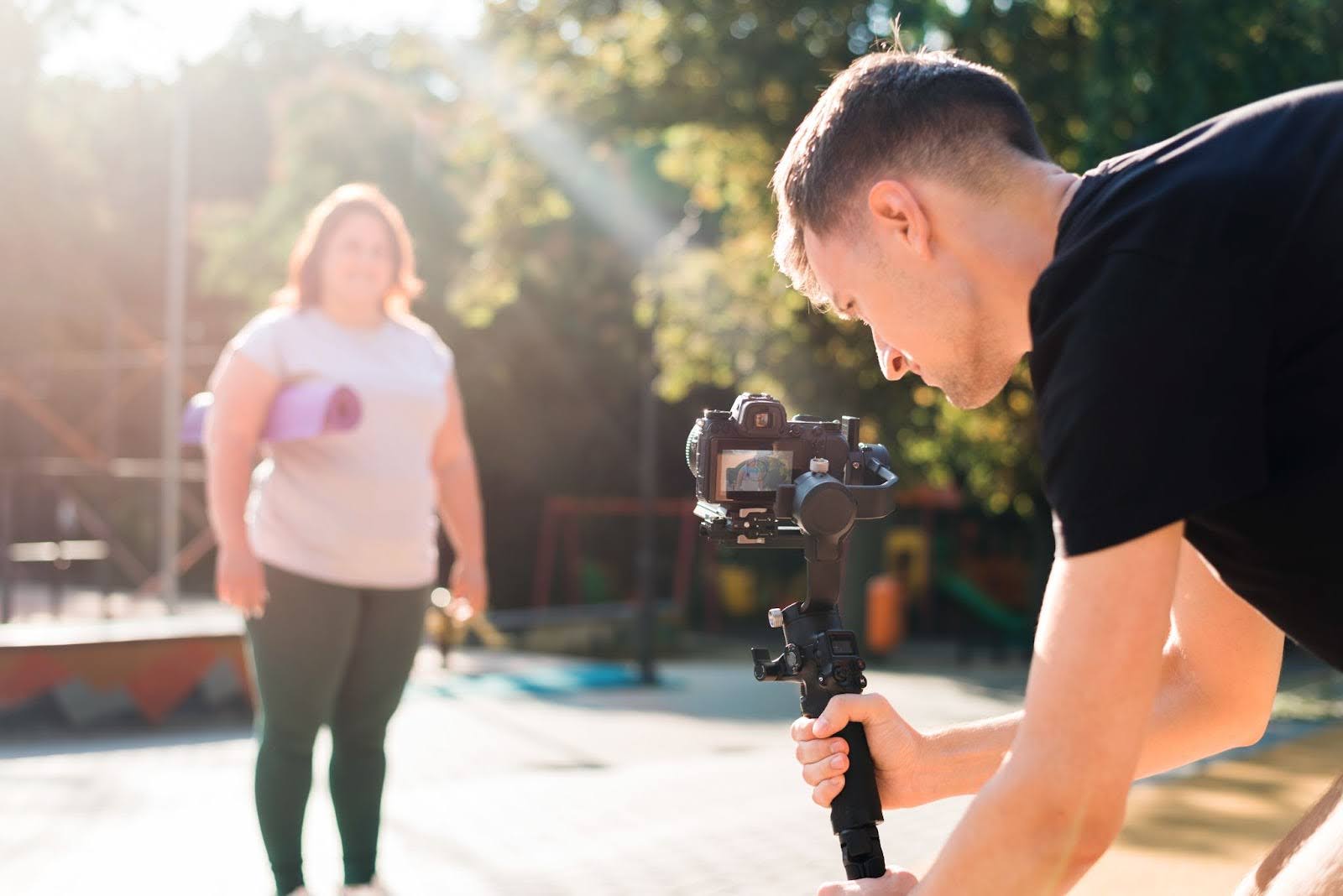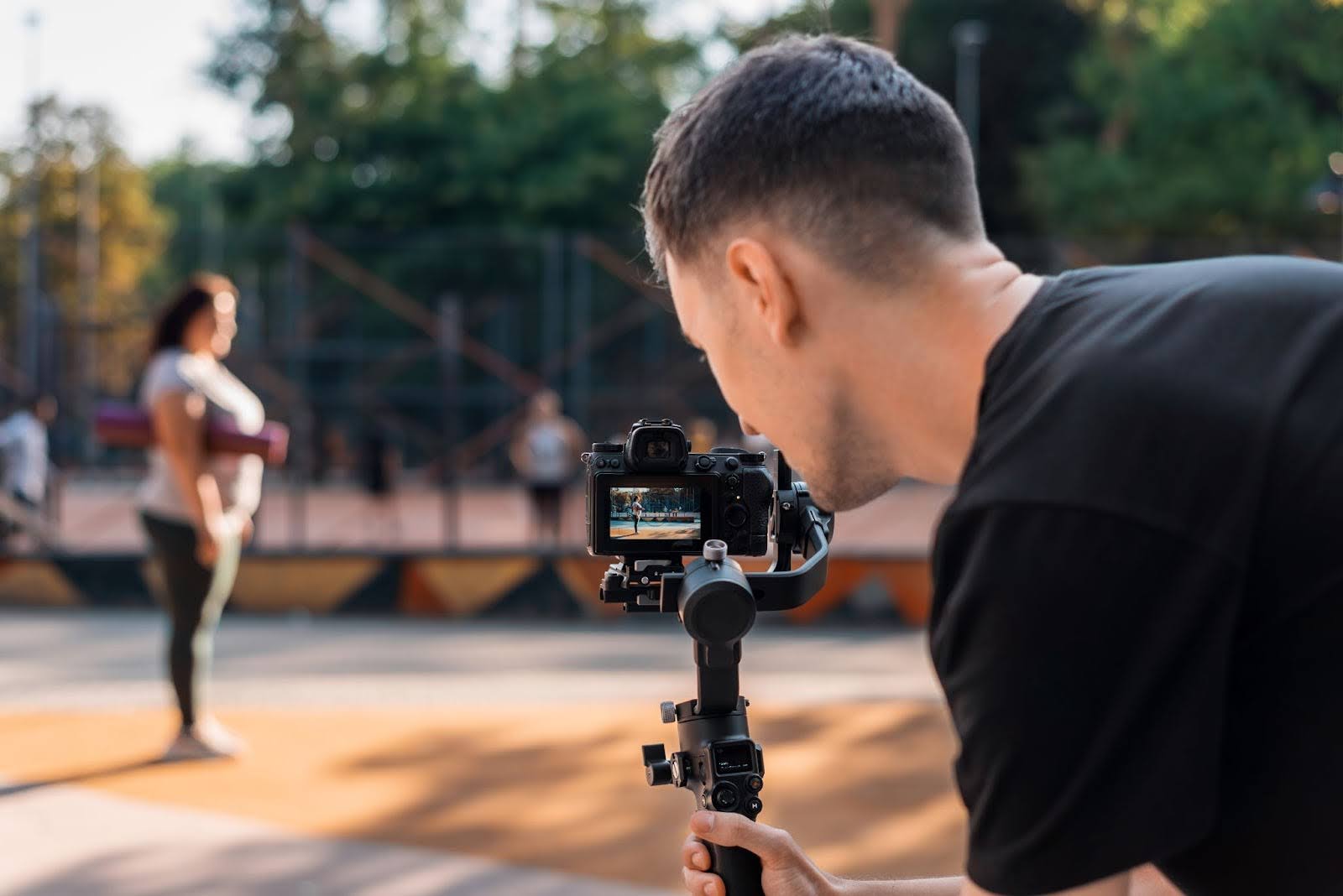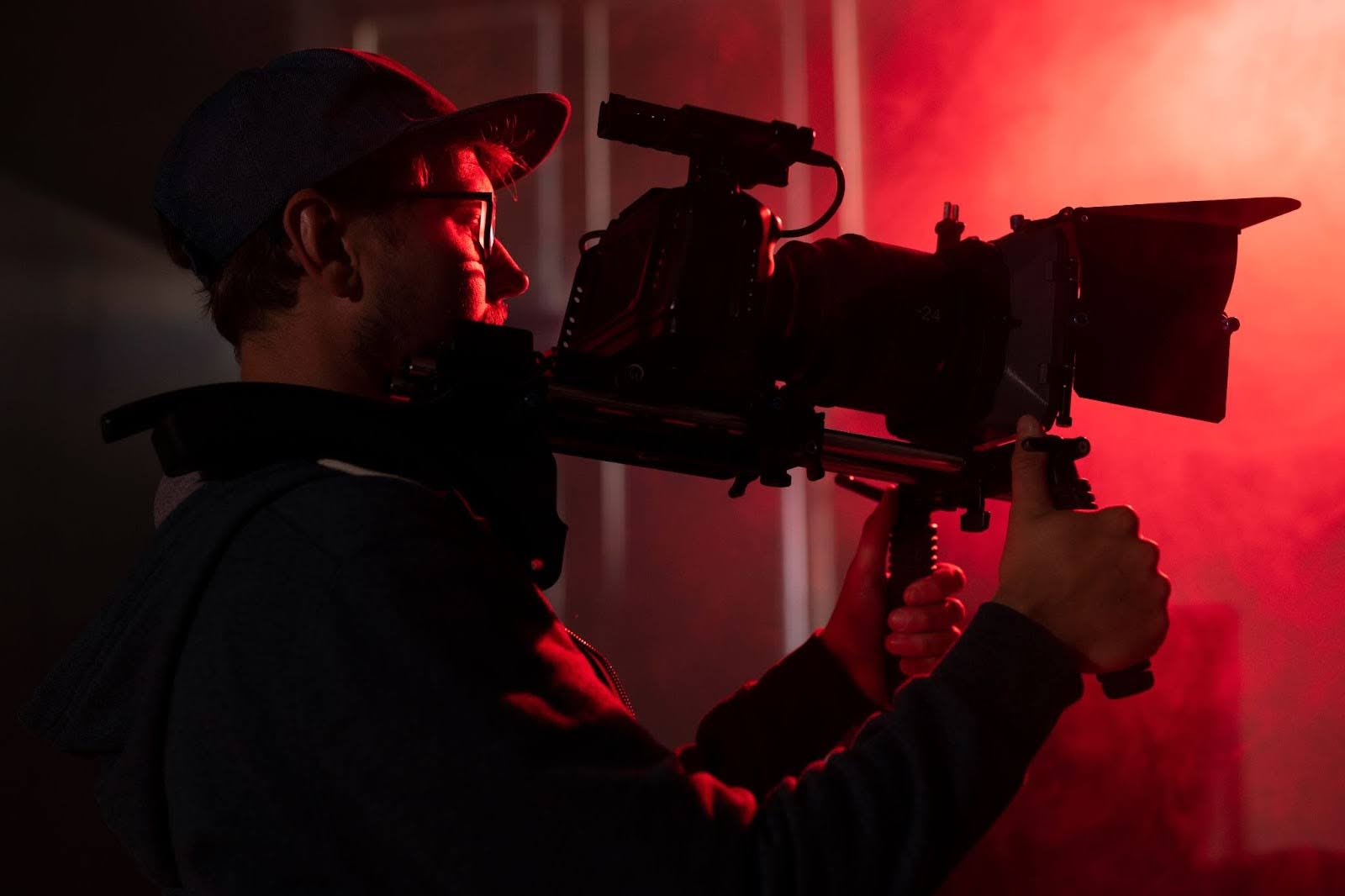Like books, films and videos tell stories. These stories are powerfully conveyed through the use of various film and video production aspects. One of the main aspects is camera movements. Just like the descriptive writing in your favourite books, the camera movement in films and videos help to magnify the story.
In this blog, we’ll delve into the various types of camera movements, when they’re used, and their importance. Without further ado, let’s get started!
The Different Types of Camera Movement (and When They’re Used)
What are Camera Movements?
Before we start exploring the types of camera movements, let’s have a look at its definition. Camera movements are the changes in the camera’s position or angle during filming. They’re essential for creating dynamic shots, guiding the audience’s focus, and enhancing storytelling in film or video production. These movements can range from simple adjustments like panning to more complex techniques involving specialised equipment.
Basic Types of Camera Movements
Basic camera movements are fundamental techniques used in filmmaking and video production. They are essential for capturing scenes effectively. Listed below are the basic types of camera movements in filmmaking and video production:
1. Pan
The first in our list of basic types of camera movements is panning. This camera movement involves turning the camera horizontally on a fixed vertical axis. The camera movement can either be from left to right or right to left.
Panning shots are commonly used for capturing wide scenes or following subjects in motion across a horizontal plane. This camera movement helps build context within a scene or smoothly transition between different points of interest.
Here’s an example of pan camera movement.
2. Tilt
The next camera movement type is tilt. Tilt refers to the vertical movement of the camera on a fixed horizontal axis. The movement can be either upward or downward. Tilting the camera can reveal vertical elements within a scene, such as tall buildings or towering landscapes.
It’s often used to emphasise height or to follow the movement of subjects moving vertically. For example, a character climbing stairs or jumping. Similar to panning, tilting is also used to create context within a scene. Both types of camera movements function to establish the setting, revealing important details, and guiding the viewer’s attention. Hence contributing to the overall context and storytelling of the scene.
Here’s how tilt is used in Little Miss Sunshine (2006) and Blade Runner 2049 (2017)
3. Zoom
Zooming involves adjusting the focal length of the camera lens. It’s either to magnify or reduce the apparent size of the subject. This is done without physically moving the camera itself. In simpler words, zooming means adjusting the camera lens to make the subject look bigger or smaller without moving the camera.
Zooms can be used to draw attention to specific details within a scene or to create a sense of intimacy by bringing the viewer closer to the action. However, it’s important to note that zooming can sometimes feel artificial compared to physically moving the camera closer or farther away.
Have a look at this zoom out shot example of Negan from The Walking Dead.

4. Dolly/Tracking
The next one in our types of camera movements list, we have dolly. This camera movement involves physically moving the entire camera setup closer (push in) to or away (push out) from the subject along a horizontal axis.
Also known as tracking shots, dolly shots are often used to follow subjects in motion at any direction. This camera movement is applied to smoothly transition between different areas within a scene too. Dolly shots can add dynamism and fluidity to the visuals. Especially when combined with smooth camera movement.
Don’t mistake a dolly or tracking camera movement with a trucking camera movement. They both have the same purpose, but with a hint of difference. We’ll look into this in more detail in the “Truck” camera movement section.
For now, let’s take a look at this cool dolly shot in A Clockwork Orange (1971).
5. Truck
Trucking is similar to tracking but typically refers to moving the camera left or right, parallel to the subject. To make it simple, trucking only involves sideway movements, following the subject from side to side.
This type of camera movement is often used to follow subjects in motion or to reveal new elements within a scene as the camera moves along with them. Trucking shots can create a sense of momentum and progression. It allows the audience to experience the scene from different perspectives as it unfolds.
In case you still don’t understand the difference, a dolly or tracking movement involves the camera following a subject in every direction. In contrast, a trucking movement only moves the camera side to side, alongside the subject. Remember, the distance between the subject and the camera is always constant in trucking shots.
Essentially, dolly or tracking changes depth and follows subjects, while trucking provides a horizontal view, maintaining the same distance from the subject.
Have a look at this example. You can see that the camera is parallel to and at the same distance from the subject.
6. Pedestal
The pedestal camera movement involves vertically raising or lowering the entire camera setup while keeping it in the same spot. This camera movement can be used to change the perspective within a scene. Such as looking down on a character from above or looking up at them from below.
Apart from providing different perspectives, they also emphasise certain elements in scenes. Pedestal shots can add depth and dimension to the composition. This allows filmmakers and video producers to explore different angles and viewpoints.
Take a look at how pedestal camera movement is used in The Royal Tenenbaums (2001). It’s also used in the first 13 seconds of this clip, when Woody first meets Buzz in Toy Story (1995).
7. Static
Sometimes, keeping the camera stationary is the best choice for a scene. Static shots provide a solid foundation for framing the action without distracting camera movement. They’re usually captured using a tripod or other stable mount.
Static camera movement is often used for static compositions, interviews, or establishing shots where the focus is on the subjects or the environment rather than dynamic movement.
Here is a clip compilation of static shots in A Clockwork Orange (1971).

Advanced Types of Camera Movements
Advanced types of camera movements require specialised equipment or techniques. They’re often used to achieve specific creative or technical effects.
1. Crane/Jib
The crane or jib camera movement involves mounting the camera on a crane or jib arm. This allows for smooth vertical movement up or down.
Crane shots are great for achieving sweeping, cinematic movements. Such as soaring over a landscape or descending into a scene from above. They provide a sense of grandeur and scale, often used in establishing shots or to capture dynamic perspectives.
Look at this crane shot in Gone With The Wind (1939). Can you feel the enormity of casualties in the scene?
2. Steadicam/Glidecam
Steadicam or Glidecam systems are handheld stabilisers. They are designed to counteract camera shake. Producing smooth and fluid movement even when the operator is walking or running.
This technology enables filmmakers and videographers to achieve steady and gliding shots. Without the compromise of a sense of mobility and flexibility. Steadicam shots are commonly used for capturing dynamic action sequences. Other than that, they are also used to capture immersive, first-person perspectives.
Let’s observe the smooth effect of steadicam or glidecam in The Wolf of Wall Street (2013) and Full Metal Jacket (1987).
3. Handheld
Another advanced type of camera movement is Handheld. It involves holding the camera by hand. This results in a more dynamic and spontaneous visual style.
Handheld shots can create a sense of immediacy and intimacy. Simulating the feeling of being present in the moment. They’re often used in documentary filmmaking, action sequences, or scenes requiring a gritty, realistic aesthetic.
Come have a look at this handheld shot scene from Saving Private Ryan (1998).
4. Whip Pan
A whip pan is a rapid horizontal movement of the camera that blurs the image. It’s often used for dramatic effect or to create a sense of disorientation.
Whip pans can be employed to punctuate a scene with sudden energy or to transition between two locations or moments in time. They add visual flair and can enhance the pace and rhythm of a sequence.
You can see how the whip pan camera movement is used in Magnolia (1999) and Whiplash (2014).
5. Tilt-shift
Tilt-shift photography and videography use selective focus to create the illusion of miniature or toy-like scenes. By tilting and shifting the lens, filmmakers can control the plane of focus and manipulate perspective. This makes large-scale subjects appear tiny and distant.
Tilt-shift techniques are often used to lend a whimsical or surreal quality to urban landscapes, architecture, or crowd scenes. Click here to see the effects of a tilt-shift shot.
6. Helicopter/Aerial Shots
Aerial cinematography involves capturing footage from a helicopter or drone. This achieves high-altitude perspectives and sweeping aerial views.
Aerial shots provide filmmakers and videographers with breathtaking vistas and dynamic camera movements that are impossible to achieve from the ground. They’re commonly used in epic landscapes, action sequences, or to establish the scale and scope of a setting.
You can see the usage of aerial shots in The Sound of Music (1965) and Kingsman: The Secret Service (2014).
7. 360° Rotation
This camera movement rotates the camera 360 degrees around a fixed point. It captures a panoramic view of the surrounding environment.
360° rotation shots offer immersive, all-encompassing perspectives. It allows viewers to explore the scene from every angle. They’re often used in filmmaking to create dramatic reveals, immersive experiences, character focus, building suspense, symbolism, and smooth scene transitions.
You can see how the 360-degree rotation camera movement is used in the 2013 film Clownwise.
8. Arc Shot
An arc shot is a camera movement where the camera moves around the subject in a curved path. This type of shot highlights different angles of the subject while keeping the background in motion. Adding depth and visual interest to the scene.
Arc shots are often used to create a sense of drama, focus on a character, or show the relationship between the subject and their environment. They are common in action scenes to add excitement, in emotional moments to intensify feelings, or in conversations to keep the visual dynamic.
While arc shots typically cover part of a circle, they can also be extended to a full 360-degree rotation. This means the camera moves completely around the subject. Offering a full view from all sides and creating a more immersive experience for the audience.
Have a look at the cool effect of a 360-degree arc shot here. You can also see how the arc camera movement is used in the 2009 film Inglourious Basterds.

Less Common or Specialised Types of Camera Movements
These additional movements provide filmmakers and videographers with a wider range of creative options to effectively convey their vision and enhance storytelling.
1. Dolly Zoom (Vertigo Effect)
The dolly zoom camera movement is a technique that involves simultaneously zooming in or out while moving the camera closer to or farther away from the subject. The result is a dramatic perspective shift that creates a sense of depth distortion or disorientation.
Also known as the vertigo effect, the dolly zoom is usually employed during intense or suspenseful scenes. This is to evoke feelings of unease or psychological tension in the audience.
You can see this camera movement type used in the famous Squid Game (2021), Guardians of the Galaxy Vol. 2 (2017), and The Quick and the Dead (1995).
2. Rack Focus
Rack focus is a technique where the focus shifts between different subjects or objects within the frame. This selectively draws the viewer’s attention to specific elements of the scene. It’s a subtle yet effective way to convey narrative emphasis or reveal important details. Thus adding depth and dimension to the composition.
Look at how this camera movement technique is applied in The Young Victoria (2009).
3. Time-lapse
Time-lapse shot captures a series of images at a slower frame rate than usual. This results in accelerated motion when played back at normal speed.
It’s commonly used to compress long periods of time into short sequences, capturing changes over time. Such as city street activity, ice melting, flowers blooming, seasonal changes, stars moving, and tides flowing. Time-lapse adds a unique visual dimension to storytelling by condensing time and highlighting temporal patterns.
Come have a look at how the time-lapse shot is used in Lucy (2014).
4. Roll
Rolling the camera involves rotating it around its longitudinal axis. Hence creating a sideways tilt or rotation effect.
This technique is often used for dramatic effect or to simulate disorientation. Such as during action sequences or moments of psychological tension. Rolling the camera can add dynamism and visual impact to a scene, enhancing its emotional intensity.
Here are some examples of the rolling camera movement in famous Hollywood films and movies.
5. POV (Point of View) Shots
POV shots mimic the perspective of a character or subject. Immersing the audience in the scene as if they were experiencing it firsthand. These shots provide a subjective viewpoint that allows viewers to see the world through the character’s eyes. Thus enhancing empathy and engagement with the narrative.
Tap here to see the examples of how POV shots impact a film.

Why Camera Movements Matter
1. Visual Storytelling
Firstly, camera movements serve as a visual language in filmmaking. They provide cues and hints about what’s happening in the story. For instance, a slow, lingering camera movement on a character’s face can suggest deep thought or inner turmoil. On the other hand, a sudden, jerky movement might indicate surprise or danger.
By carefully choosing and choreographing camera movements, filmmakers and video producers can guide the audience’s attention and understanding of the plot.
2. Viewer Engagement
Think of camera movements as the director’s way of inviting the audience into the world of the film or video. When the camera moves, it’s like the audience is moving along with it. Hence, making them feel like they’re experiencing the scene firsthand. This dynamic engagement can heighten emotional investment. They can even make the viewing experience more immersive.
A well-executed tracking shot, for example, can make viewers feel like they’re right there with the characters, experiencing the action as it unfolds.
3. Spatial Understanding
Next, camera movements help establish the spatial relationships within a scene. They provide context by showing where characters are in relation to each other and their surroundings. For instance, a sweeping crane shot can reveal the vastness of a landscape. A series of quick cuts between different angles on the other hand, can convey the chaotic energy of a crowded room.
By moving the camera strategically, directors can shape the audience’s perception of space and enhance their understanding of the environment in which the story takes place.
4. Emotional Impact
Furthermore, camera movements have the power to evoke specific emotions in the audience. This is because movement itself can be inherently emotional. For example, a slow, graceful camera movement might evoke feelings of serenity or nostalgia. A rapid, frenetic movement can elicit excitement or fear.
By aligning the camera’s movement with the emotional tone of the scene, filmmakers and video producers can amplify the impact of the story. Thus creating a more visceral experience for the audience.
5. Visual Aesthetics
Finally, camera movements contribute to the overall visual style and aesthetic of a film or video. They help create the mood and atmosphere of each scene. Shaping the film’s look and feel. Directors often develop a signature style or use specific types of movements. This helps them to convey their artistic vision.
For example, a director known for their kinetic, fast-paced storytelling might frequently use handheld camera movements to create a sense of immediacy and intensity. A director with a more classical sensibility on the other hand, might favour elegant, carefully choreographed crane shots for their visual grandeur.

The Bottom Line
In conclusion, camera movements are a vital aspect of filmmaking and video production. They influence the visual storytelling and emotional impact of a film and video. By mastering different types of camera movement and employing them effectively, directors can deepen the audience’s connection to the story. Evoking powerful emotions in the process. Through thoughtful utilisation, they’re able to craft memorable and immersive cinematic experiences that resonate with viewers long after the credits roll.
Curious to learn more about the video production and filmmaking world? Explore our blogs! Reach out to us if you need help or have any questions. We’re here for you!


